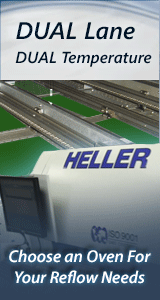Printed Circuit Board Assembly & PCB Design Forum
SMT electronics assembly manufacturing forum.
- SMTnet
- »
- Electronics Forum
- »
- QFN Packages
QFN Packages
![]() We are developing a new product, and some of the designers a...
- Feb 25, 2005
by
We are developing a new product, and some of the designers a...
- Feb 25, 2005
by
![]()
![]() Would these be the parts that have just pads located on the ...
- Feb 25, 2005
by
RDR
Would these be the parts that have just pads located on the ...
- Feb 25, 2005
by
RDR
![]()
![]()
![]() Land grid devices [ie, BCC�, LGA, QFN, MicroLeadFrame�, etc]...
- Feb 25, 2005
by
davef
Land grid devices [ie, BCC�, LGA, QFN, MicroLeadFrame�, etc]...
- Feb 25, 2005
by
davef
![]()
![]()
![]() Some of the QFN's have/has? (sorry for the grammatics but I ...
- Feb 26, 2005
by
siverts
Some of the QFN's have/has? (sorry for the grammatics but I ...
- Feb 26, 2005
by
siverts
![]()
![]()
![]() see link
...
- Feb 27, 2005
by
see link
...
- Feb 27, 2005
by
![]()
![]() Exactly.
...
- Feb 27, 2005
by
siverts
Exactly.
...
- Feb 27, 2005
by
siverts
![]()
![]()
![]() We use QFNs in automotive products and have done a good bit ...
- Feb 28, 2005
by
We use QFNs in automotive products and have done a good bit ...
- Feb 28, 2005
by
![]()
![]() Are your packages mounted on boar using sockets or BGA balls...
- Mar 02, 2005
by
Are your packages mounted on boar using sockets or BGA balls...
- Mar 02, 2005
by
John S
- SMTnet
- »
- Electronics Forum
- »
- QFN Packages






